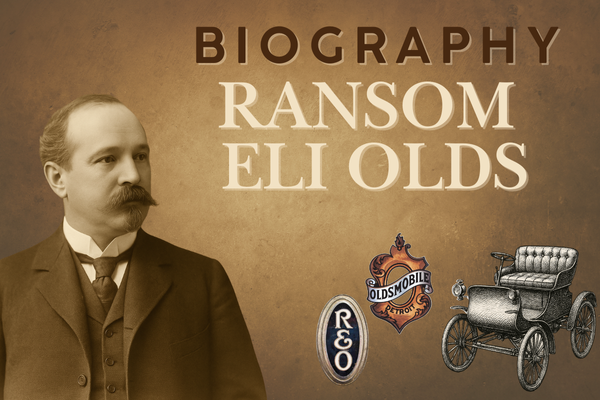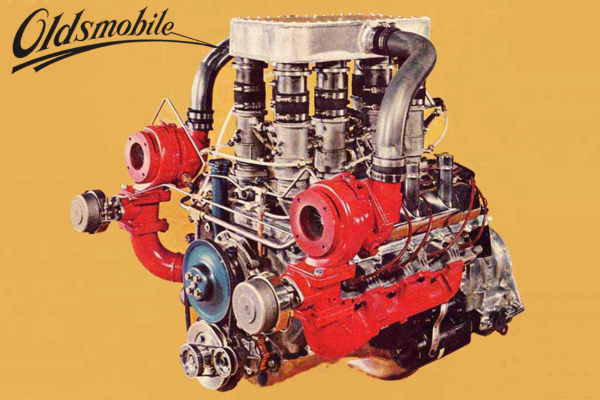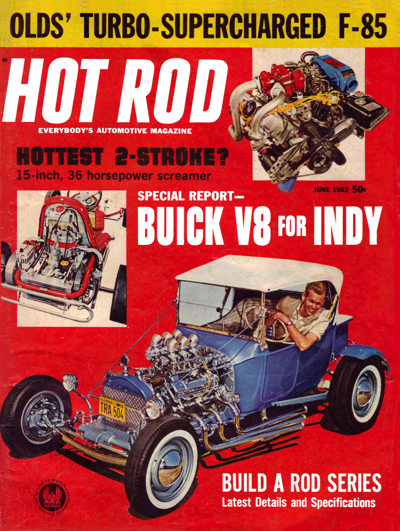1949 Willys Models Described In Detail

The 1949 Jeep Station Sedan could now be had with an F-Head “Super Hurricane” six-cylinder power plant. Horsepower remained the same but the engine was more responsive due to 10 more ft. lbs. of torque.
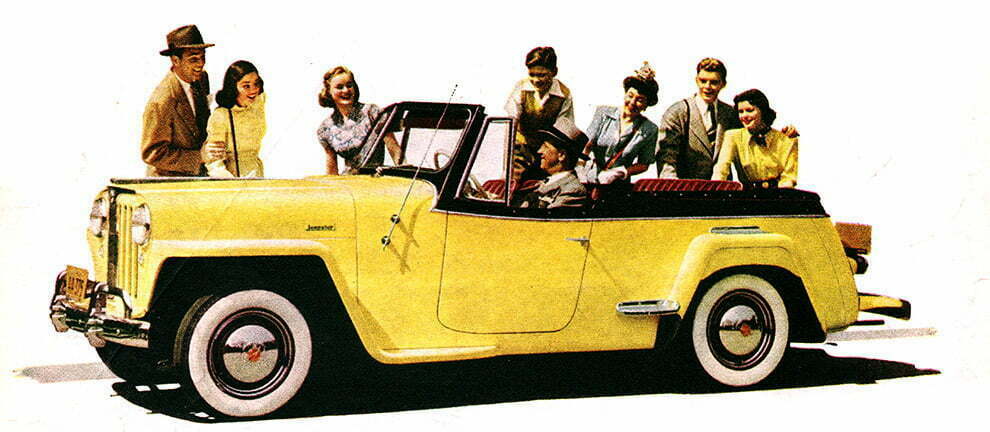
Mid-year the 1949 Jeepster also received the F-Head “Hurricane” four-cylinder. 3,638 were sold in this model run.
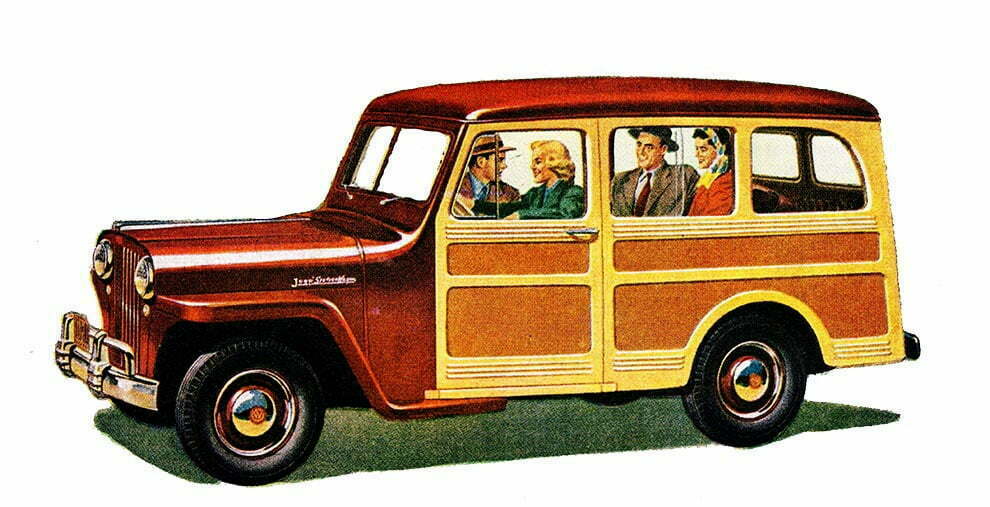
The 1949 Jeep Station Wagon was now available with 4-wheel drive. The “Hurricane” F-Head 4-cylinder became available in mid-year, increasing horsepower, torque, and responsiveness.
General Year Information
The 1949 Willys cars were introduced in November 1948 and the VJ3-6 and 4X463 appeared in dealer showrooms in July 1949. Model year production peaked at 32,928 units. Calendar year registrations of 28,576 cars were recorded. W.M. Canaday was the chief executive officer of the company this year.
Chassis Information
- Wheelbase: (Series 4X463 station wagon) 104.5 inches; (All other models) 104 inches.
- Overall length: (Station Wagons) 174 inches; (Jeepster) 174.8 inches; (Station Sedan) 175.8 inches.
- Front tread: (Model 463) 55 inches; (All other models) 56 inches
- Rear tread: (All models) 57 inches.
- Tires: (Early Jeepster Four) 5.90 x 15 (Jeepster Six) 6.70 x 15 (Late Jeepster Four) 6.40 x 15 (Station wagon and Sedan, Six and Four) 6.70 x 15 (Late station wagon w/4WD) 6.50 x 15.
Models Offered
For 1949, Willys offered two versions of the Jeepster in its four-cylinder lineup. The price was lowered to $1,495, with some previously standard features returning as extra-cost options. The second Jeepster was introduced in January of 1948 and featured the Company’s first F-head engine. The Jeepster continued to be sold with snap-on side curtains for weather protection. Roll-up side windows were not provided.
Willys offered a new mid-year (July 1949) 104.5-inch wheelbase four-wheel-drive station wagon, plus the regular wagons.
Willys continued to sell the six-cylinder station sedan as before.
Engines
Serial Numbers on all models were on a plate at the left of the driver’s seat on the floor riser.
- Four-cylinder Station Wagon– Series 463 – (104-inch wheelbase) were numbered 79716 to 106504.
- Four-cylinder Station Wagons– Series 463X4 – (104-1/2-inch wheelbase) were numbered 10001 to 13186.
- Four-cylinder Jeepsters– Series VJ2 – numbered 79716 to 91495 (prior to July 1949) and 10001 to 12698 (after July 1949).
- Six-cylinder Station Sedans– Series 633 – numbered 13119 to 22769 with the ending number for station sedans as 16583.
- Six-cylinder Jeepsters– Series VJ3 – were numbered 10001 to 10654.
Standard Jeepster and Station Wagon “Go Devil”– Inline L-head four-cylinder. Cast iron block. Displacement: 134.2 cubic inches. Bore and stroke: 3.13 x 4.38 inches. Compression ratio: 6.48:1. Horsepower: 63 @ 4000 RPM. Solid valve lifters. Torque: 105 @ 2000 RPM. Three main bearings. Carburetion: Carter WA1-613S single-barrel.
Optional Jeepster “Hurricane”- Inline F-head four-cylinder. Cast iron block. Exhaust valves in the engine block and intake valves in the cylinder head. Displacement: 134.2 cubic inches. Bore and stroke: 3.13 x 4.38 inches. Compression ratio: 7.5:1. Horsepower: 69 @ 4000 RPM. Torque: 114 @ 2000 RPM. Solid valve lifters. Three main bearings. Carburetion: Carter WA1-613S single barrel.
Standard Station Sedan ”Lightning Six”– Inline L-head six-cylinder. Cast iron block. Displacement: 148.5 cubic inches. Bore and stroke: 3.00 x 3.50 inches. Compression ratio: 6.42:1. Horsepower: 72 @ 4000 RPM. Torque: 125 ft. lbs. @ 1800 RPM. Solid valve lifters. Four main bearings Carburetion: Carter WA1-645S single-barrel.
Optional Station Sedan “Super Hurricane” – Inline F-head six-cylinder. Cast iron block. Exhaust valves in the engine block and intake valves in the cylinder head. Displacement: 148.5 cubic inches. Bore and stroke: 3.00 x 3.50 inches. Compression ratio: 6.42:1. Horsepower: 72 at 4000 R.P.M. Torque: 135 ft. lbs. @ 2000 RPM. Solid valve lifters. Four main bearings Carburetion: Carter WA1-645S single-barrel.
Power Train Options
-
- The three-speed manual transmission was standard on Jeepsters.
- Overdrive transmission was standard on all models, except Jeepster.
- Four-cylinder 134.2 cubic inches 7.0:1 compression engine (no cost).
- The heavy-duty air cleaner was optional at an extra cost.
Willy 1949 Production Numbers
| Model No. | Body Type & Seating | Price | Weight | Production |
| Jeepster Models Vj2 and VJ3 | ||||
| 463 | 2-dr Jeepster-4P | $1,495 | 2468 | |
| VJ3 | 2-dr Jeepster-4P (4Cly) | $1,495 | 2468 | |
| VJ3 | 2-dr Jeepster-4P (6 Cly) | $1,530 | 2392 | |
| Total Production Jeepsters | 3638 | |||
| Station Wagon 463 | ||||
| 463 | 2-Dr Station -5P (4 Cyl) | $1,595 | 2895 | |
| 463 | 2-Dr Station -5P (6 Cyl) | $1,695 | 2890 | |
| 463X4 | 2-Dr Station -5P (4 Cyl) | $1,895 | 3136 | |
| Station Sedan 633 | ||||
| 633 | 2-Dr Station -5P (4 Cyl) | $1,745 | 2890 | |
| Total Production | 32,635 | |||
Body Paint Color Codes
Other Significant Options
- Fog lights.
- Front bumper guards.
- Front grille guard.
- Heater and defroster.
- Large wheel discs.
- License plate frames.
- Oversize tires.
- Radio and antenna.
- Rear bumper guards.
- Special paint.
- Spotlights.
- Wheel trim rings.
- White sidewall tires.






